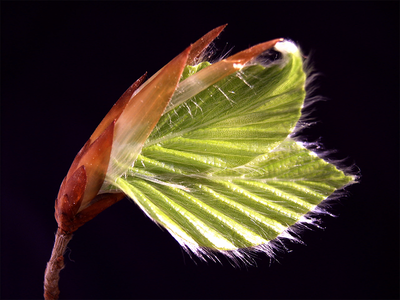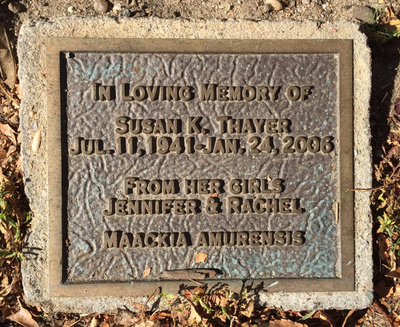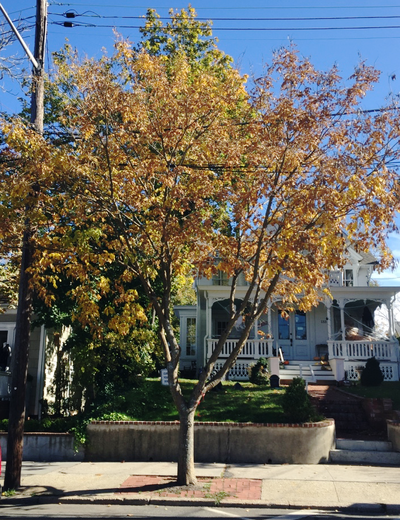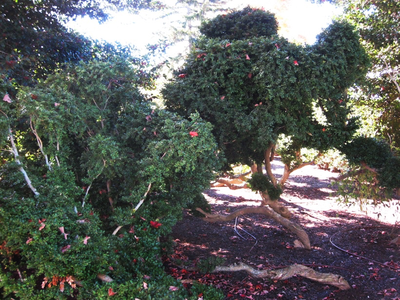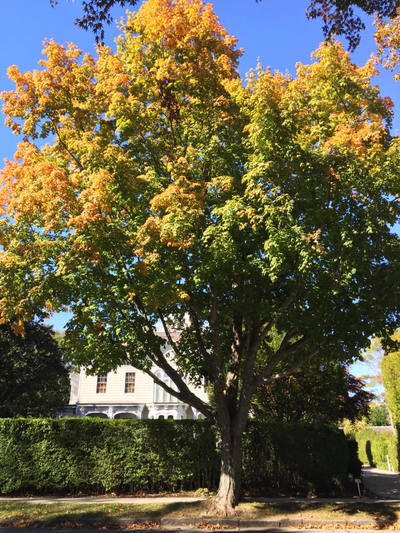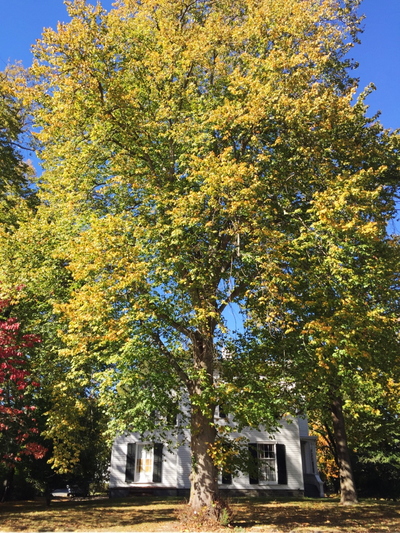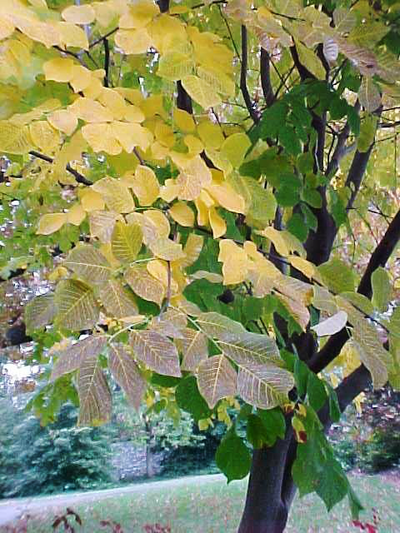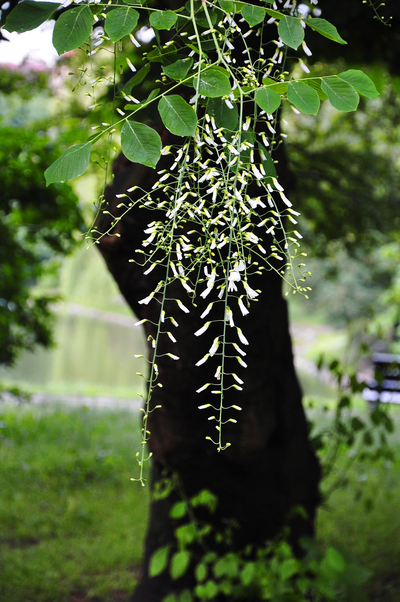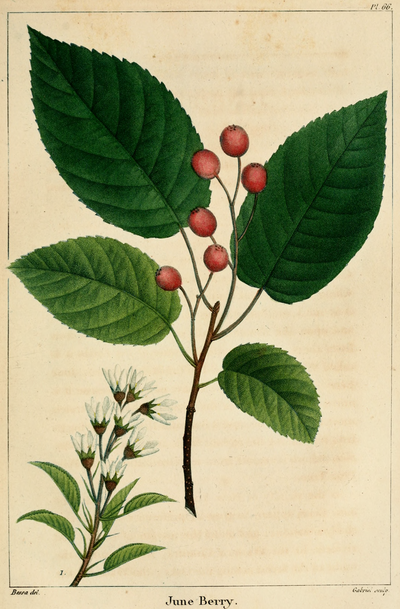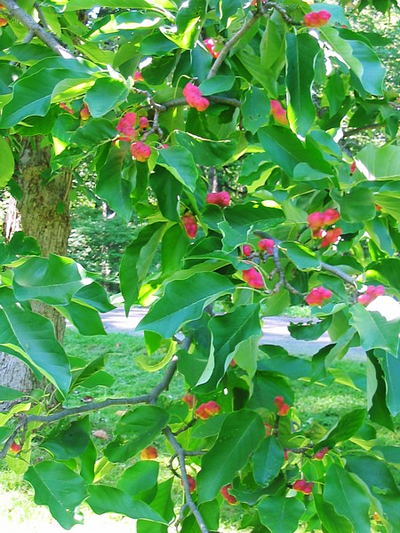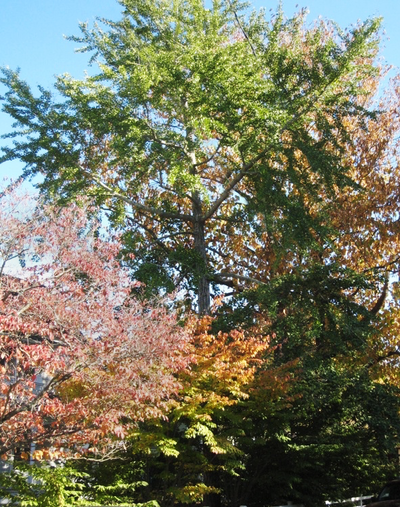Remarkable trees of
sag harbor
On this tour you’ll find not only American natives but many trees whose presence was made possible because of Sag Harbor’s far reach as an international port and whaling village. We have European lindens that are thought to have been part of the cargo of the “Louis Philippe”, a French merchant ship wrecked off Mecox Bay in March, 1842. Living trophies like Empress and Japanese pagoda trees, weeping mulberries, and Chinese smoke trees were brought back from Asia. And one of the earliest Japanese maples in America used to stand at 241 Main St, brought here after Admiral Oliver Perry’s visit to Japan in 1854. Its offspring are still visible at 237 Main St at the corner of Palmer Terrace.
The mission of the Sag Harbor Tree Fund is to raise money through a commemorative tree program to plant street trees on village-owned tree lawns. The Fund selects the appropriate tree for its site and maintains a diversity of species to reduce the effects of disease and insect infestations. The Tree Fund provides the tree, planting and watering for three years after planting. Commemorative plaques are available for both new and older existing street trees. Four hundred street trees have been planted by the SHTF since 1994.
The Tree Fund can be reached at sagharbortree@optimum.net or at PO Box 3133, Sag Harbor, NY, 11963.
A TREE FOR ALL SEASONS
Crape myrtle, Lagerstroemia indica, hails from east Asia and the Indian subcontinent. It is a multi-stemmed tree that provides a good spot for nesting wrens and songbirds. It is truly a plant for all seasons. Its bark is especially appealing, since it sheds each year. Leaves drop after a spectacular display of fall color and its large panicles of flowers may be white, pink, mauve, purple or carmine, blooming for up to three months into the late summer season here. And it doesn’t need much in the way of fertilizing; in fact, over-fertilizing will result in fewer flowers.
The genus myrtus, common name myrtle, was described by Linnaeus in 1753 and named for the merchant Magnus Von Lagerström, who collected plants for him. Linnaeus laid the foundation for the way plants are classified and named, using "binomial nomenclature", in which two names describe a type followed by something more specific, often a region (in this case "indica" means "of India") or sometimes a variation on the person credited with finding them. Carl Linnaeus was adulated in his time. Author August Strindberg, a fellow Swede, wrote "Linnaeus was in reality a poet who happened to become a naturalist”.
Ours planted by the Sag Harbor Tree Fund are on Long Island Avenue, along the Jean Hollander Memorial Walk.
Crape Myrtle on Long Island Ave Flowers (photo credit: Kenpei)
Crape Myrtle on Long Island Ave†
Peeling Bark†
THE TUPELO
Tupelo, or black tupelo, blackgum, or Nyssa sylvatica, is named after a Greek water nymph and its preferred habitat, woodlands. It’s a graceful tree that is more often called tupelo in the southeastern US than in the northeast, where it is more commonly called pepperidge, black gum or sour gum, although it is not particularly gummy in any environment. Its most specialized name is beetlebung, probably from its extremely hard and durable wood being used to make the “beetles”, or mallets, that are used for hammering bungs into barrels.
Tupelos’ leaves are variable in size and shape, with lustrous upper surfaces and brilliant autumn foliage. Because they have very deep tap roots, they are not commonly used in landscaping but our Tree Fund has seen fit to plant this beauty. It can grow to about 70 ft tall, and — surprise — can reach the ripe old age of over 650 years old! Birds are absolutely crazy about its sour fruits.
You may find this one at 71 Garden St. near Long Island Ave.
Tupelo on Long Island Ave Flowers (photo credit: Kenpei)
Tupelo on Long Island Ave†
Peeling Bark
SWAMP WHITE OAK
This Quercus bicolor, the swamp white oak, was planted by the Tree Fund. Its geographical distribution is smaller than that of the white oak but it grows about as tall, up to about 95 ft, with a shorter lifespan of up to 350 years. Like the white oak, it also feeds many birds as well as deer, rabbits and other creatures. It has been grown for lumber and also increasingly for landscaping, as it is a relatively easy tree to transplant. In spite of its name, it doesn’t tolerate swampy, permanently wet soils.
Find this one at Spring St between Garden and Howard.
White Swamp Oak on Spring St†
White Swamp Oak on Spring St Leaves
White Swamp Oak at Morton Arboretum
THE DENSEST SHADE TREE
Fagus sylvatica, the European beech or common beech, is quite capable of growing to 160 ft tall, though its typical height is about 80-110ft. Its growth depends on its location. In a forest where it’s trying to reach light, a beech will be considerably taller than in an open spot. It has the exceptional behavior, for a deciduous tree, of not shedding its leaves (a process called abscission) in the fall, particularly when the plant is young or clipped as a hedge. Beech nuts are edible, and it’s thought that Stone Age man ate them, bringing them to England when the Channel was iced over about 6,000 years ago.
Beeches tolerate very cold winters, but are sensitive to late spring frosts. When they form forests, their shade is so intense that few other plants can grow around them. There is a great beech forest in the Semenic National Park in Romania that’s home to Europe’s largest predators, the brown bear, grey wolf, and the lynx. Many of its trees are older than 350 years, but ours pictured here is quite young. It is a copper beech (Fagus sylvatica 'Purpurea') and replaces one nearby that was killed by Hurricane Sandy in 2012.
It was planted by the Tree Fund at Long Island Ave and Meadowlark, and another beautiful old specimen may be found at 238 Main St.
European beech on Long Island Ave†
Leaf Unfurling
Beech at 238 Main St
Beech Forest in Germany
FROM SIBERIA TO SAG HARBOR
Maackia amurensis, the Maackia tree, was named for Richard Karlovich Maack, the 19th century Siberian explorer who discovered it in the Amur Region on the Chinese-Siberian border, and it occurs there as well as in Korea. As you might imagine, it can tolerate severe dryness, cold, and heavy soil conditions. It’s a relatively small, slow-growing tree, reaching about 20-30 ft tall here, and despite its tolerance for cold, its leaves drop soon after the first freeze without changing color. Buds emerge looking silvery, as if covered with frost. The smell of its flowers is similar to freshly mown grass and burst forth, like fireworks, later than most trees, and its coppery-brown bark peels into loose flakes and curls.
Our Maackia, planted by the Sag Harbor Tree Fund, is at 135 Main St.
Memorial Plaque
Maackia Flowering
New Leaves (photo credit: Kurt Sturber)
Maackia Planted by SHTF†
FROM MOUNT VERNON TO SAG HARBOR
Liriodendron tulipifera, the Tulip tree (AKA tulip poplar, whitewood, fiddle-tree and yellow poplar) is the tallest eastern hardwood in North America, native to it and extending from southern Ontario all the way to central Florida and Louisiana. It can grow to 190 ft, often with no limbs (!) until it reaches about 85 ft in height, making it a popular timber tree. As its growth suggests, tulip trees dislike shade, reaching for the sun rapidly. A tree only 15 years old may already reach 40 ft in height with no branches within reach of humans on the ground.
Tulip trees flower in late spring, and have the unusual characteristic of leaf buds that begin with a pair of scales that form an oval envelope protecting each leaf until the weather is warm enough for it to emerge, not to mention the special shape of the leaf itself, which has been likened to a fiddle, hence one of its names. It is a major honey plant because its crazy-beautiful flowers produce abundant nectar. Its wood is used for lumber, being resistant to termites. This one can be found at 107 Division St, but one of ours here in Sag Harbor, which can be found in the Nancy Boyd Willey Park (a small “pocket” park just past Mashashimuet Park on the way to Bridgehampton), originates from a seed from George Washington’s great 1793 specimen at Mount Vernon!
Tulip Tree Flower (photo credit: Christine Schmidt)
Tulip Tree*
Unmistakable Tulip Tree Leaf
Nancy Boyd Willey Park†
The Delicious Smelling Linden
The Small-Leaved Lime, or Small-Leaved or European Linden’s botanical name is Tilia cordata and it is native across Europe from England and south to the Caucasus and Western Asia. It has lovely heart-shaped leaves, and its flowers have a heady, rich scent. In Britain, its presence is an indicator of ancient woodland, and it had been considered a holy tree. There are trees there estimated to be 800 years old.
Small-Leaved Lindens were planted to form beautiful avenues, like the Unter den Linden in Berlin, making a dense canopy. It can be espaliered, a technique that involves training the branches to grown in a certain (usually geometrical) formation, and even as bonsai trees. A small-leaved linden that is about 700 years old is the thickest tree in Slovenia, and every June a national meeting of politicians is held under it. This one is at 189 Main St, and another six impressive lindens may also be found on Bayview Ave just off Main St.
Holly Leaves and Flowers (photo credit: N.P. Holmes)
Mature Tree (photo credit: Ziga)
Huge Linden on Main St†
THE WORLD’S FASTEST TREE
The white mulberry, Morus alba, (and in this case of this one at 186 Main St. Morus alba 'Pendula', because of its weeping habit), hails from China, where it is cultivated to feed silkworms in commercial silk production. You may have known that, but lesser-known is that its stamens catapult its pollen from its flowers at over half the speed of sound! This makes it the world's fastest plant. The white mulberry's fruit can be eaten, but it’s milder than that of its cousins', the red and black mulberries. Its fruit is used in Asian medicine to treat grey hair, constipation, and other mild disorders, its bark to treat cough, fever, headache, and sore eyes, and its root bark has powerful antibacterial properties. Studies show that mulberry leaf extract can be used to treat highly venomous snake bites.
Because of the red color of their fruits, white mulberry trees poetically represent the deaths of Pyramus and Thisbe, and Willa Cather referred to this in her 1913 novel O Pioneers!, in which two forbidden lovers are killed.
White Mulberry*
New Leaves, Mulberry Fruits with Silkworm
Mulberry Tree Bark (photo credit: Andre Abrahami)
A TREE YOU COULD LIVE IN (LITERALLY!)
American sycamore, Platanus occidentalis, is also known as the American planetree, occidental plane, and buttonwood, and is native to North America. In 1792, the New York Stock Exchange was formed under the terms of the “Buttonwood Agreement” so called because it was signed under a sycamore at 68 Wall St. You can easily recognize one, in this case at 200 Main St right in front of the Whaling Museum, by its beautiful exfoliating bark which flakes off in large patches because the bark lacks elasticity, leaving the surface mottled greenish-white and tan as it’s sloughed off by the growing tree.
Sycamores can grow to be quite massive, typically becoming 100-130 ft tall. Larger ones were recorded historically; in 1744 a Shenandoah Valley settler and his two sons lived for most of the year in a hollow sycamore, and George Washington recorded in his journal a sycamore measuring almost 45 ft in circumference.
Its wood is often used for butchers’ blocks, boxes and crates, and it’s susceptible to cankers and other damage that cause it to look unsightly, so its use in cityscapes has largely been usurped by the more resistant London plane tree. Sycamores date back to the Cretaceous period of 145-66 million years ago.
Interior (photo credit: Nathan Mudhenk)
Sycamore in Sag Harbor*
Botanical Illustration by Redouté
THE HOLLY BEARS THE BERRIES
American holly, Ilex opaca, another American East Coast native, is an evergreen that grows normally to 66 ft. It is dioecious, needing male and female plants to reproduce, and only females produce the berries (fruits) that contain the holly’s seeds. These are poisonous to humans but attractive to many songbirds, and birds will hide under their thorny leaves for protection. It produces the whitest wood of all trees and this one is at 20 Jefferson St.
The holly is of course a well-known part of the Christmas holidays. The carol “The Holly and the Ivy” describes what is thought to have been a battle of the sexes, which holly “wins”, in that it “wears the crown”. This of course ignores the fact that it’s the female plant that bears its crowning berries. Holly was widely used in the old Roman feast of Saturnalia in the same way that it is used at Christmas, for decoration and to bring the outdoors in. Saturnalia, occurring around the same time as Christmas in the Julian calendar, was a feast of merrymaking and gift-giving, and had the added interesting feature of role reversal; masters would wait on slaves, for instance. It was also a festival of light.
Holly Leaves and Berries (photo credit: Derek Ramsey)
American Holly*
White Holly Wood
QUEEN ANNE’S LEAST FAVORITE PLANT
English boxwood, Buxus sempervirens 'Suffruticosa', is native to the Mediterranean basin, including North Africa and east to Turkey. It can reach a height of almost 30 ft, but it is generally pruned and used as an ornamental plant in formal gardens, prized because of its dense growth habit and small leaves as well as for being evergreen (“sempervirens" means evergreen). Its odor is a matter of taste, being called noxious and loathsome to some, including Queen Anne, who had it dug up from her gardens.
Its wood is extremely hard because of its notoriously slow growth, and so is used in cabinet-making, the crafting of clarinets, mallet heads, and even as a substitute for ivory. Egyptians used boxwoods as decorative plants as early as 4,000 BC. The fantastic examples here are at 20 Jefferson St and the Custom House, at Main and Garden St.
Boxwood*
Boxwood at Custom House†
Holly Leaves (photo credit: Didier Bescouens)
Belgian Garden (photo credit: Paul Hermans)
JAPAN’S GIFT TO SAG HARBOR
Acer palmatum, the Japanese maple, does in fact originate in Japan and northeastern Asia. There are hundreds of named cultivars, and their winged seeds are known as samaras, whose shape allows them to be carried far and wide on the wind. Acer palmatum received its name from a Swedish doctor-botanist who thought their leaves, with five points, resembled palms.
Japanese maples are popular bonsai subjects, and without constraint their growth habit may be either upright or pendulous, depending on the cultivar, of which there are over 1,000. Their leaves may be light green to purple, with many shades in between, and even variegated, and they can range from 3 ft to 75 ft in height. They seem to like our Sag Harbor area, and many beautiful specimens can be found throughout our village. The one pictured here is at 237 Main St, and is a direct descendant of Admiral Oliver Perry’s visit to Japan in 1854, being an offspring of one formerly at 241 Main that was brought back as a specimen from that voyage.
Japanese Maple on Main St†
Weeping Maple (photo credit: Rüdiger Wölk)
‘Sangu Kako’ Cultivar’s Leaves
FROM MAPLE SYRUP TO THE NBA
Acer saccharum or Sugar maple, (and now you know why saccharine is called saccharine), also known as rock maple, is native to our northeastern forests. It is the maple that produces syrup, and is also known for its brilliant fall foliage. It will grow to a little over 100 ft tall and can live up to 400 years but does not tolerate pollution, so you know we are blessed with a clean environment.
A mature tree will often change color either well in advance of or well behind other trees, and these maples' seeds demand a prolonged period of cold temperatures to break down their coatings and be able to germinate. One trick of the sugar maple is referred to as hydraulic lift, in which the tree brings water from deeper soil layers and exudes it into upper, drier layers, helping both itself and the plants around it. 40 liters of maple sap are needed to make one liter of maple syrup, hence its price!
Maples are sportspeople’s trees, being used for wood floors in the NBA, baseball bats, and pool cues, and also feature in the making of some musical instruments (violins, guitars, and drums). It’s also used for archery bows because of its flexibility. Although it was planted in urban environments, the sugar maple is not tolerant of pollution, where Norway maple is used instead. Ours pictured is at 238 Main St.
Classic Leaf Color
A Young Maple (photo credit: Jean-Pol Grandmont)
Sugar Maple on Main St†
THE DEMON TREE
The Japanese pagoda tree, or Chinese pagoda tree, or Styphnolobium japonicum or Sophora japonica, began its popularity in China, which spread to Japan and later to Europe and North America. It flowers later than most other flowering trees and grows to an impressive 60 ft with equal width. Two are at 249 Main St, just behind the house.
The last emperor of the Ming Dynasty, Chonzhen, hanged himself on one in Beijing, and it provides one of the fundamental herbs in Chinese medicine, having a host of useful medicinal properties. It is a tree of power. In China it is still known as the demon tree and other species rarely grow near it. A Japanese folktale entitled “The Evil God in the Pagoda Tree”, tells of a poor farmer who had to be defended by other deities for failing to make an appropriate offering to it.
Japanese Pagoda Tree†
Curtiss Botanical Magazine Drawing
The Tree’s Distinctive Bark
Japanese Pagoda Tree†
SURVIVORS OF THE GREAT ELM PLAGUE
The American elm, Ulmus americana, is a towering tree that regularly reaches 100 ft in height and once abundantly covered the United States, until the notorious Dutch Elm disease reduced its numbers catastrophically. It is estimated that only 1 in 100,000 trees is Dutch Elm disease-tolerant, and we are lucky to have a few here in Sag Harbor; this example survived the great Dutch Elm blight of the 1930s. By the 1990s, after decades of research, American scientists had developed resistant strains of the tree to plant.
The American elm is tolerant of city environments and grows rapidly and gracefully, which made it a favorite for planting on streets and in parks. But as with many other plants where enthusiasm overtakes sense, there became essentially a monoculture in many places, and a lack of diversity of other plant varieties around led to less disease resistance, which happens with any planting of the same species over a wide area. In forests, they naturally occur with other trees like black ash, silver maple, sycamore, ironwood, and others.
A healthy American elm can tolerate temperatures as low as -44 degrees Fahrenheit, and live for several hundred years. We hope that this example at 256 Main lives long and prospers.
Mature Elm (photo credit: Henry Hartley)
A Survivor†
A Young Elm Plant (photo credit: Jean-Pol Grandmont)
THE ZELKOVA TREE
Zelkova serrata, or Zelkova, was common throughout northern Europe and North America as late as the Pliocene era, but was then confined by the ice age that followed to the eastern Mediterranean and the Caucasus. Its hard wood is used in furniture making, and the word Zelkova is a combination of Kartvelian words meaning “bar” and “rock”, giving an idea of its strength. It's now found throughout the northern hemisphere, and ours, planted by the Tree Fund, can be found at 275 Main St.
The Japanese are particularly fond of Zelkovas, and one pictured here is one of Japan’s National Monuments, having grown to a truly extraordinary size.
Our Zelkova†
National Japanese Monument
Zelkova Canopy
Typical Leaves
THE SILVER MAPLE
Acer saccharinum, the silver maple, sports quite a few monikers, including creek maple, silverleaf maple, soft maple, water maple, swamp maple, and white maple. It’s another native northeastern species, common and highly adaptable to many environments. Its leaves have very slender stems, adding to its enjoyment since their undersides are silvery-white, and show in the slightest breeze. It has typical “samara” fruits, the little winged delights that flutter down when they’re ripe, and is the largest of any native maple. Both silver and red maples, unlike others, shed their fruits in the spring rather than the fall, and so are important food for squirrels, chipmunks and birds at that time of year. When their bark is carved out by beavers and deer, they provide shelter for squirrels, raccoons, opossums, owls and woodpeckers. This old example is on Glover St, just off Main on the north side of the street.
A fast-growing tree, silver maples were used as landscaping trees after WWII in suburban developments and urban settings, often replacing American elms stricken with Dutch elm disease. But their rapid growth also leads to brittle branches and they can quickly become unattractive without attentive pruning, so they fell out of favor.
Silver Maple†
Its Leaves, Silvery Undersides in a Breeze (photo credit: Renee McGurk)
Fruiting in Spring
A RARE SOUTHERN STRANGER
Yellowwood, Kentucky yellowwood or American yellowwood, and sometimes Virgilia (Cladrastis kentukea), is a species native to the southern United States. It produces fragrant white wisteria-like flowers in early summer, described as papilionaceous (butterfly-like) which are borne on long panicles. It has beautiful fall color as well. It is unique here in America (although other types are found in Asia), was identified by botanist André Michaux in 1796 growing by the Cumberland River in Tennessee, and is found primarily in the mid-Atlantic states. Its common name comes from the fact that its heartwood is yellow, which is used in small amounts in specialized woodwork. It can tolerate urban settings. Look for ours just behind the closest house on Jermain towards Otter Pond itself.
Our Yellowwood at Otter Pond†
Botanical Rendering
Flowering, Fall Foliag
ABOUT THAT GLASS OF CHARDONNAY…
This example of white oak, Quercus alba, is a descendent of the oak and hickory forest that used to cover much of Long Island. Oakland Cemetery is a remnant of that forest, and the Sag Harbor Tree Fund has planted more white oaks in Oakland. They usually sport grey bark, rather than white, are long lived (over 450 years), and are found all over eastern North America. Their height depends on the altitude at which they grow, and they don’t produce acorns until they reach sexual maturity at about 20 years. They feed a multitude of birds, rabbits, squirrels and deer and are not fans of pollution and urban environments. This old tree is on the drive on the west entrance to Oakland Cemetery.
White oaks contain tyloses, interior growths in the plants’ cells that seal them, making them water-resistant. So now you know how your chardonnay came to be aged in oak barrels! It’s also used in ship-building and in Japanese martial arts weaponry for its strength and resiliency.
SAGE PARK: OLD AND YOUNG TREES
At the southwest corner of Jermain Ave and Suffolk St is Sage Park, the Tree Fund’s earliest planting effort. It includes small flowering trees: crabs apples (Malus 'Sugar Tyme') and callery pears (Pyrus calleryana ‘Aristocrat’) flourish in the sunny spots while early flowering shadblow (Amelanchier arborea) and redbud (Cercis canadensis), classic American understory trees thrive in light shade or sun. Larger trees include native black oak (Quercus velutina), part of the older growth, pepperidge (Nyssa sylvatica), another native, a Katsura tree (Cercidiphyllum japonicum) with its apricot fall color, and an Empress tree (Paulownia tomentosa), whose blueish flowers bloom over Memorial Day weekend in our climate.
Crabapple Flowers
Blooming Redbud (photo credit: Betty from Tenessee)
Black Oak Tree
Leaves, Acorns
Shadblow Botanical Drawing
CUCUMBER MAGNOLIA
The cucumber magnolia (Magnolia acuminata) or cucumbertree or blue magnolia is so named because of its cucumber-like fruits. Besides these, which ripen to a beautiful red shade, it has very large leaves, but unlike other magnolias, its flowers are not at all showy. It is native to eastern North America, and there is a stand of them known as “The Shining Tree Woods” that the North American Native Plant Society has purchased to preserve. In Canada they are protected as an endangered species. You’ll find this one at 4 William St.
A LIVING FOSSIL
Also at 4 William is Gingko biloba, or gingko or maidenhair tree, is the last remaining relative of the Gingkophyta family, all others of which are now extinct but whose fossil line dates back to 270 million years, making it a living fossil. The gingko grows to as high as 160 ft, is deep rooted (so resistant to snow and wind damage), and resistant to disease, and so very long-lived. Some specimens have been claimed to be more than 2,500 years old.
Gingkos have uniquely lovely fan-shaped leaves. They are dioecious, meaning that they having separate sexes, and the females’ seeds are attractive but stinky, containing butyric acid that smells like rancid butter when they fall. They are fertilized by motile sperm from male trees in a way similar to other very ancient plant species like cycads, ferns, mosses and algae. Oddly, male gingkos are highly allergenic, but females produce very few allergens.
Six gingko trees growing about a mile from the Hiroshima atomic bomb epicenter were among the few things to survive. As a dietary supplement, gingkos have been studied as treatments for Alzheimer’s and dementia, with mixed and largely dubious results. It can also cause serious side effects, and should be used with caution. Although its seeds are edible and a traditional Chinese food, they shouldn’t be eaten in large quantities over a long period. When handled, they can also cause contact dermatitis similar to poison ivy.
Local Gingko*
Leaves (photo credit: James Field)
An Ancient Belgian Gingko (photo credit Jean-Pol Grandmont
Fall Color
THE STOWAWAY
Paulownia tomentosa, the Empress Tree, is actually native to central and western China, and was named in honor of Anna Paulowna of Russia, queen consort of the Netherlands. It is extremely fast-growing, and considered an “exotic invasive” in North America. It earned this reputation partly because its lightweight, puffy seeds were used as packing material by Chinese porcelain exporters in the 1800s, and when packages would be damaged the seeds were disbursed, often along transit routes, enabling it to establish across the country. Since Sag Harbor was an important port in the 1800s, it's easy to imagine how it got here.
Empress trees grow 33-82 ft tall, with large heart-shaped lobed leaves, and can be mistaken for catalpa. They produce fragrant lilac-colored flowers in spring and can survive wildfire because their roots will regenerate new, fast-growing stems. It is tolerant of pollution, doesn’t care much about type of soil, and can help prevent erosion, but its Achilles’ heel is shade.
In China, an empress tree is traditionally planted when a girl is born, and its wood is used in Asia for carving and the making of stringed instruments. This example is at 14 Henry St.
Buds & Flowers (photo credit: Oregon State University)
Empress Tree*
Fruits
UMBRELLA MAGNOLIA
Magnolia tripetala, commonly called umbrella magnolia, umbrella-tree or elkwood, referring to its antler-like winter look, is a deciduous tree native to the understory of the forests of the southeastern United States in the Appalachian Mountains, and ours has found a home at 14 Henry St.
These magnolias can grow up to about 45 ft tall, with large white flowers that have an unappealing smell. They are easy to grow and are indicators of rich, moist soil, but are considered endangered in Florida and Indiana. Interestingly, they are pollinated by beetles. They would certainly be a welcome sight while trekking through the Appalachian trail in spring.
Umbrella Magnolia*
Botanical Drawing
Bud and Flower (photo credit: Derek Ramsey from Chanticleer Garden)











